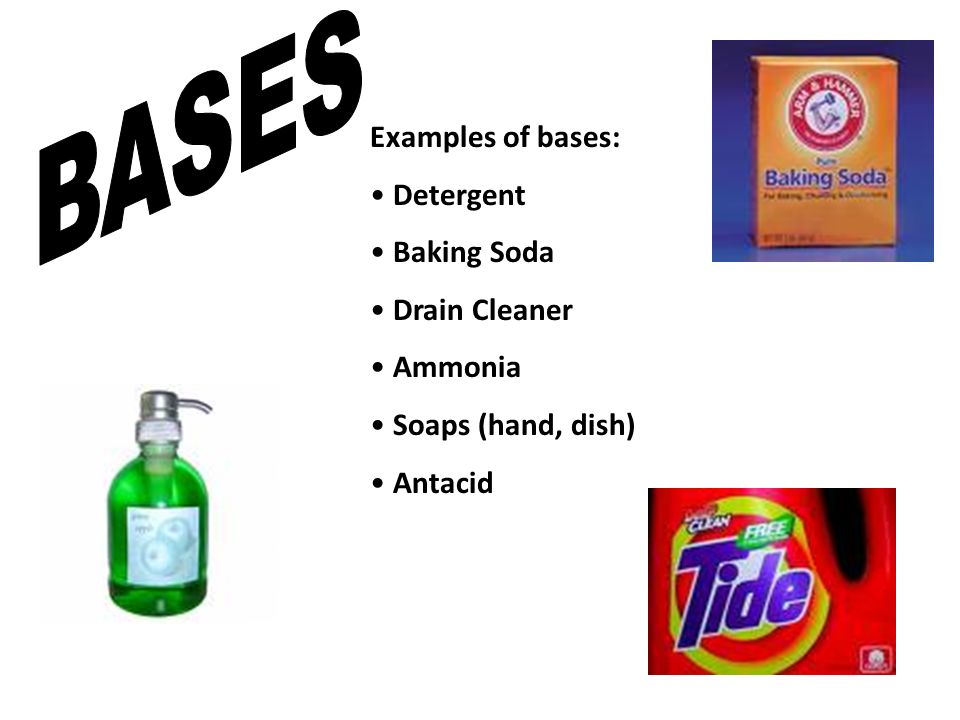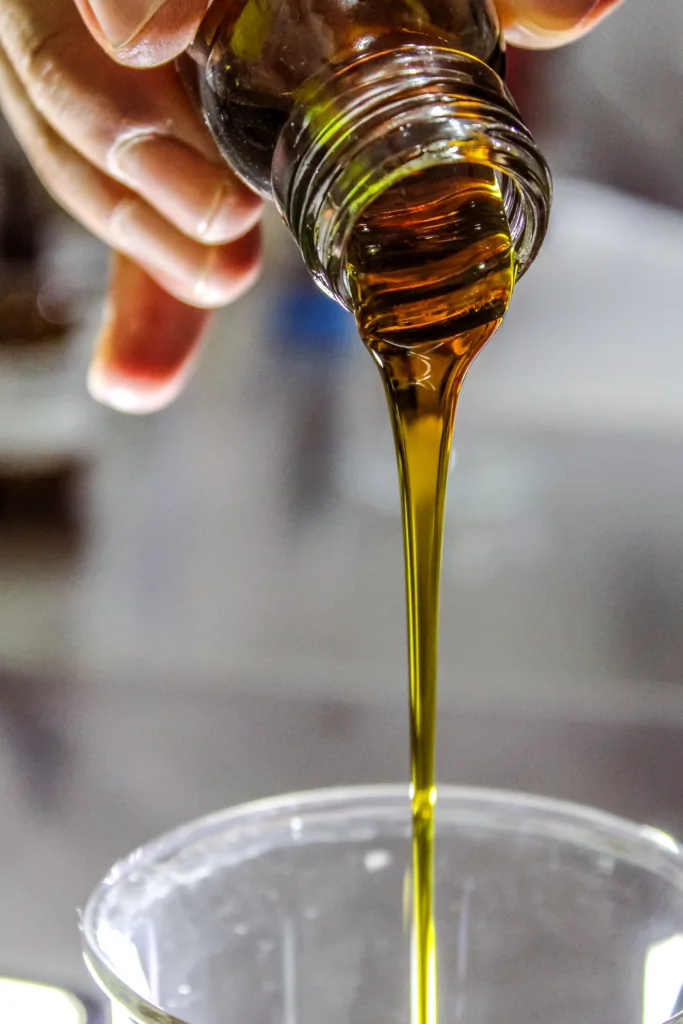Bases are a fundamental part of chemistry and play an essential role in our daily lives. From cleaning agents to the food we eat, bases are everywhere. One of the most intriguing properties of bases is their slippery feel.
Have you ever touched a base and felt a slimy, soapy, or slippery sensation? If so, you are not alone. Bases are known to have this unique tactile sensation, which is unlike anything else. In this blog post, we will discuss why bases feel slippery and what causes this sensation.
The slippery feel of bases is due to their ability to change the structure of proteins. Bases are substances that can accept protons (H+) and create hydroxide ions (OH-) in water. When a base comes into contact with the skin, it reacts with the fats and oils, similar to the process of saponification. This reaction causes the base to form a soap-like substance, which makes the skin feel slippery.
The slippery feel of bases is also due to their alkaline nature. Bases have a pH greater than 7, which means they have a high concentration of hydroxide ions. When these ions come into contact with the skin, they react with the natural oils and fats, causing the skin to feel slimy or soapy. This sensation is similar to what you would feel if you were to touch soap.
The strength of the base also determines the degree of the slippery feel. Strong bases such as sodium hydroxide and potassium hydroxide are highly reactive and can cause severe chemical burns. These bases can cause significant damage to the skin, leading to blistering and scarring. On the other hand, weak bases such as baking soda and ammonia are less reactive and have a milder slippery feel.
Bases feel slippery becuse they can change the structure of proteins and react with the natural oils and fats on the skin. The alkaline nature of bases and their strength also play a role in the degree of the slippery feel. While bases are essential in many applications, it is crucial to handle them with care and protect the skin and eyes from their effects. Understanding the properties of bases is essential for a safe and successful outcome in any chemical application.
The Slipperiness of Bases
Yes, bases do feel slippery to the touch. This is beause bases have the ability to change the structure of proteins. When a base comes into contact with your skin, it reacts with the oils on your skin to form soap. This soap is what makes the surface feel slippery.
However, it is important to note that strong bases can cause severe chemical burns. This is because they start to damage the proteins in your skin. The slippery feeling is a warning sign that you should be cautious and avoid prolonged contact with the base. If you do come into contact with a strong base, it’s important to wash the affected area immediately with plenty of water to neutralize the base and prevent further damage.

The Effects of Bases on Skin Slipperiness
Yes, bases can make your skin feel slippery. Bases react with the natural oils in the skin, known as sebum, whch are made up of fatty acids. This reaction is similar to the saponification process used to make soap. The base and fatty acids combine to form soap, which can make the skin feel slippery. The slippery sensation is due to the hydrophobic tails of the fatty acids in the soap molecule, which repel water and create a smooth surface on the skin. This is why bases such as sodium hydroxide, commonly used in soap making, are known as caustic substances and should not come into contact with the skin for extended periods of time. Therefore, it is important to handle bases with care and avoid prolonged exposure to them to prevent any potential harm to the skin.
The Slipperiness of Acids and Bases
Bases are typically more slippery than acids. This is because when bases come into contact with water, they produce hydroxide ions (OH-) that are capable of reacting with the fatty acids in the skin, creating a soapy sensation. On the other hand, acids do not produce this effect and can even cause a burning or stinging sensation on the skin. Therefore, if you were to compare the slipperiness of an acid and a base, the base would generally feel more slippery due to the reaction it causes with the skin.
The Slipperiness of Bases When Wet
Yes, bases can feel slippery when wet. This is because bases have a high pH level, which means they have a high concentration of hydroxide ions. When these ions come into contact with water, they create a soapy, slippery texture. This property of bases is commonly observed with common household items such as soap, which is a base that is used to clean our skin and surfaces around us. Additionally, the slippery feel of bases is due to thir ability to change the structure of proteins, which in turn affects their physical properties. Therefore, the slippery feel of bases when wet is a result of their chemical properties and their interaction with water.
The Effects of Bases on Skin
Yes, strong bases can hurt your skin. When your skin comes in contact with strong bases, it can cause irritation, inflammation, and even blisters. The severity of the damage will depend on the concentration of the base, the duration of contact, and the area of the skin that is affected. In some cases, the damage can be severe enough to cause skin burns and scarring. Therefore, it is important to take necessary precautions and avoid direct contact with strong bases. If you accidentally come into contact with a strong base, it is important to immeiately rinse the affected area with water and seek medical attention, if necessary.

The Sensory Experience of Acids and Bases
Acids and bases are chemical substances that have distinct properties. Acids feel wet to the touch, just like plain water. However, prolonged contact with acids can cause damage to the skin, as they are corrosive in nature. On the other hand, bases feel slippery and soapy to the touch. This slippery sensation is due to the alkaline properties of bases, which can also cause damage to the skin upon prolonged contact. It is important to note that both acids and bases should be handled with caution, and protective gear should be used when working with them.
The Effects of Bases on the Skin
Bases, such as sodium hydroxide or potassium hydroxide, can make your hands feel slimy due to a chemical reaction known as saponification. When a strong base coms into contact with fatty acids and oils that naturally occur on the surface of your skin, the base reacts with them to form soap molecules. These soap molecules have a hydrophilic (water-loving) head and a hydrophobic (water-hating) tail, which makes them able to dissolve in water and trap dirt and grease. This is why soap is commonly used for cleaning purposes.
The slimy feeling that you experience when using soap is due to the soap molecules forming a layer on the surface of your skin. This layer can make your skin feel slippery or slimy to the touch. However, it is important to note that not all bases have the same effect on your skin. Weak bases, such as baking soda, are not strong enough to cause saponification and do not have the same slimy effect as strong bases.
In conclusion, the slimy feeling that you may experience when using bases is due to the saponification reaction that occurs when a strong base reacts with fatty acids and oils on the surface of your skin. This reaction forms soap molecules, which can create a slippery layer on your skin.
The Sensation of High PH Levels
Yes, high pH water can feel slippery. This is because water with a high pH level is considered to be alkaline, which means it has a higher concentration of hydroxide ions. These ions can react with the natural oils on our skin, resulting in a slippery sensation. The sensation of slipperiness can be particularly noticeable when washing our hands or taking a shower, as the high pH water can make it difficult to rinse off soap and shampoo. Additionally, high pH water can also lead to other issues such as damage to pipes and appliances, and can affect the taste of the water. Therefore, it’s important to maintain a neutral pH level in our water systems to avoid tese issues.
The Slippery Sensation of Chemicals on the Skin
Bases are the type of chemicals that feel slippery on the skin. The reason behind this sensation is the reaction between the base and the fatty acids present on the skin. This reaction breaks down the fatty acids, producing soap molecules that have a slippery texture. This process is called saponification, and it is commonly used in the production of soap. When a base comes into contact with the skin, it dissolves the natural oils present on the skin’s surface, leading to the sensation of slipperiness. Examples of common bases that can case this sensation include sodium hydroxide (NaOH), potassium hydroxide (KOH), and ammonia (NH3). It is essential to handle these chemicals with caution as they can cause skin irritation and burns.

The Properties of Bases
Bases are a type of chemical compound that tend to taste bitter and feel slippery to the touch. They have a pH level above 7, which means they are alkaline in nature. Bases also have a unique property of turning red litmus paper blue, which is used to distinguish them from acidic substances. In addition, bases can neutralize acids and are often used in chemical reactions to balance pH levels. Some common examples of bases include sodium hydroxide, potassium hydroxide, and calcium carbonate. Overall, the properties of bases make them an important component in many industrial, medical, and household applications.
The Slippery Feel of Alkalis
Yes, alkalis have a slippery or soapy feel when they come in contact with the skin. This is because alkalis can react with the fatty acids present in the skin to form soap. The soap formed in this reaction makes the surface of the skin feel slippery. This phenomenon is commonly observed when using soap or other cleaning products that contain alkalis. Additionally, alkalis are usually water-soluble, meaning they can dissolve in water to form a basic solution. This property of alkalis makes them useful in various industries, including cleaning, agriculture, and manufacturing.
Differences Between Acids and Bases
Acids and bases are two types of chemical substances that have distinct properties and characteristics. Here are three major differences between acids and bases:
1. Taste and Smell: One of the most noticeable differences between acids and bases is their taste and smell. Acids typically have a sour taste and a pungent smell, while bases are bitter in taste and have an earthy, soapy smell.
2. pH Level: Another key difference between acids and bases is their pH level. Acids have a pH level of less than 7, while bases have a pH level greater than 7. The pH scale ranges from 0-14, where 0 is the most acidic and 14 is the most basic. Neutral substances have a pH of 7, which is neither acidic nor basic.
3. Litmus Test: A litmus test is a commonly used method to determine whether a substance is an acid or a base. When a litmus paper is dipped into an acid, it turns red, indicating that it is an acid. Conversely, when a litmus paper is dipped into a base, it turns blue, indicating that it is a base.
In summary, acids and bases have several differences in their taste and smell, pH level, and response to litmus paper. Understanding these differences is crucial in varous fields such as chemistry, biology, and medicine.
The Slipperiness of NaOH
Yes, Sodium Hydroxide (NaOH) feels slippery to the touch. When NaOH comes in contact with skin, it reacts with the oils and lipids present on the skin to form soap. This soap creates a slimy, slippery sensation on the skin. However, it is not recommended to touch NaOH solution with bare hands as it is a highly caustic substance that can cause severe burns and damage to the skin and eyes. Therefore, it is important to always wear protective gloves and goggles when handling NaOH.

Properties of Bases
Bases are a class of chemical compounds that exhibit several unique properties. Firstly, bases have a bitter taste, which sets them apart from oher compounds such as acids, which often have a sour taste. Secondly, bases feel slippery or soapy to the touch, which is why they are commonly used in cleaning products. Finally, bases are good conductors of electricity when dissolved in water, which makes them useful in a variety of industrial and scientific applications. These three properties – bitter taste, slippery feel, and electrical conductivity – are all key characteristics of bases and help to differentiate them from other chemical compounds.
Properties of Bases
Bases are substances that have a pH level greater than 7 and are known for hving a slippery, soapy texture. Here are five properties of bases:
1. Aqueous solutions of bases are electrolytes: Bases, when dissolved in water, create an aqueous solution that can conduct electricity, making them electrolytes.
2. Bases taste bitter: Unlike acids, which have a sour taste, bases have a bitter taste. However, they are not found in foods as frequently as acids.
3. Bases change the color of indicators: Indicators are substances that change color in response to the presence of acids or bases. Bases turn indicators like litmus paper blue or purple.
4. Bases do not react with metals in the same way as acids: Acids react with metals to produce hydrogen gas, whereas bases do not. However, bases do react with acids to produce a salt and water.
5. Bases are often used in cleaning products: Bases are commonly used in cleaning products due to their ability to break down and dissolve oils and fats. Some examples of bases used in cleaning products include ammonia and sodium hydroxide.
Conclusion
In conclusion, bases do indeed feel slippery to the touch due to their ability to change the structure of proteins. This property allows them to react with the fat layer under the skin, resulting in a sensation similar to that of having soap on your skin. It is important to note that strong bases can case severe chemical burns due to their ability to damage proteins in the skin. Understanding the properties of acids and bases is crucial in many fields, including chemistry, biology, and medicine. By recognizing the unique characteristics of bases, we can better understand their effects on living organisms and how to handle them safely.
